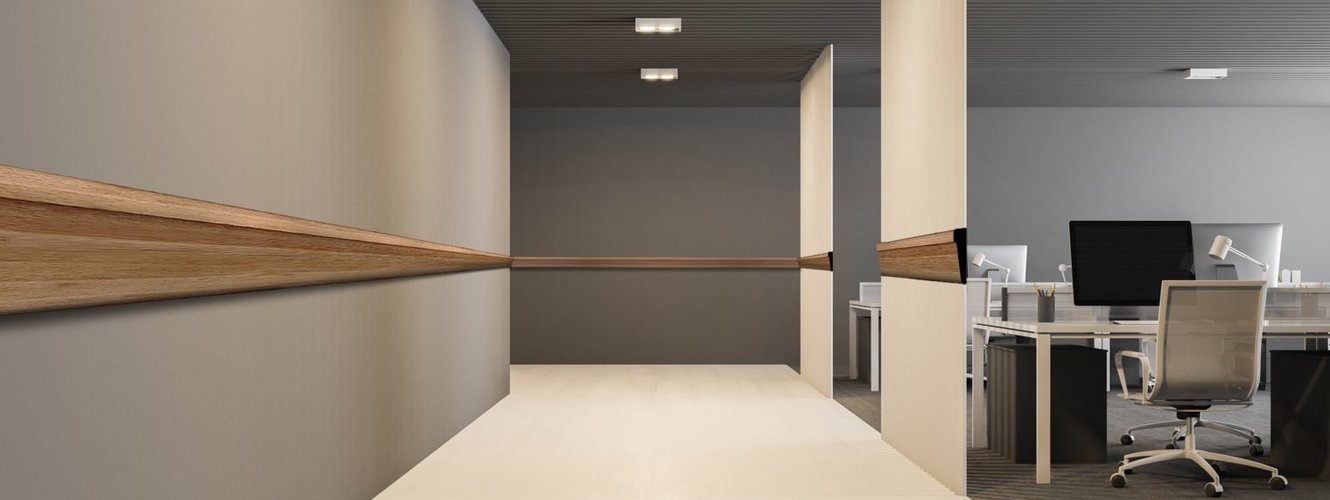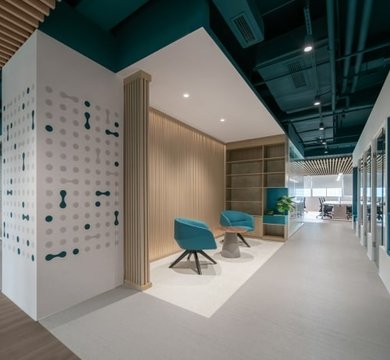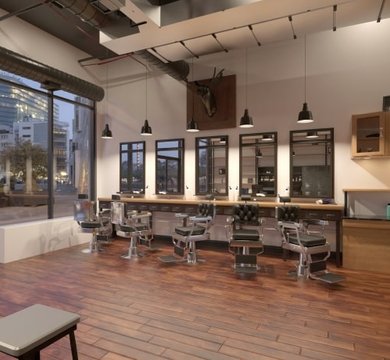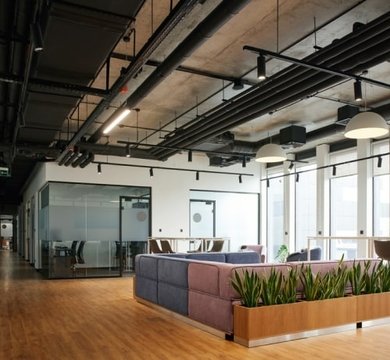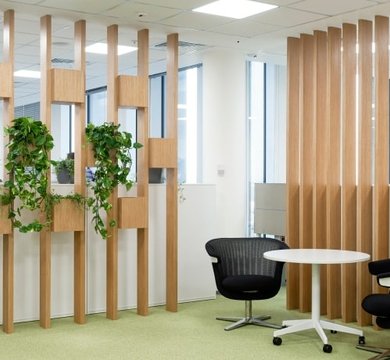When planning new office refurbishments in London or in any location, its very rare that the finished product will be a plain, white room. There’s a myriad of details that can be applied or highlighted in order to add interest and personality to a room, and one of these is wooden mouldings.
Even in a commercial office setting, wooden mouldings are a go-to feature for our design team. While you can choose moulds, slats, batons and beading, the biggest interior question right now is are dado rails in fashion in 2022?
In this article, MPL explains what a dado rail is, why it’s a fantastic design tool and how it can provide commercial and retail design solutions.
What are Dado Rails?
A dado rail is a strip of wood that is applied to a wall using glue, nails or screws. Dado rails fall in the same category as picture rails, architrave and skirting boards. The wood can be plain and unfussy, or it can be decorative in appearance, with fluted or bevelled edges. Usually, a dado rail is secured roughly a third of the way up a wall and we’ll go on to explain the reason why.
The History Of the Dado Rail
We’re asking are dado rails in fashion now but in bygone areas, it wasn’t a matter of design taste but necessity.
- When did dado rails first start appearing? Dado rails were deemed an essential feature in Georgian and Victorian times.
- Why were dado rails needed? In the late 18th and early 19th centuries, it was the fashion for dining chairs to be placed against the wall when not in use. This damaged the paintwork or wallpaper so a dado rail was applied to act as a buffer.
- Does the dado rail have another name? Unsurprisingly, the dado rail is sometimes referred to as a chair rail.
- Were dado rails confined just to dining rooms? While first installed for practical reasons, the dado rail proved such a design hit that the Victorians, especially, started adding these strips of wood to hallways and other rooms.
Are dado rails in fashion 2022?
For period properties – whether that’s in a commercial office setting or a residential dwelling – the dado rail has never been out of fashion. Thankfully, the renovation of older character spaces has leant towards retaining or restoring original features, so many dado rails have been preserved.
Although the trend for installing dado rails ebbed away when we started tucking dining room chairs under the table, with the 20th century seeing a real decline in dado rails being added, this feature is having a real renaissance. So to answer the question are dado rails in fashion, the answer is an emphatic yes!
How Can Dado Rails Be Used Within Your Office Space?
You may think that dado rails have no place in a commercial office or workplace setting but during an MPL office design consultation, we will show how this design feature can be put to creative uses. Here are a few ways a dado rail can form part of your office refurbishment:
Enhance a period premises
Many of the UK’s period buildings have been converted for commercial use and it’s good to embrace any heritage, especially as original dado rails tend to be very ornate and can really attract attention. If you already have a dado rail, this can be restored or painted to turn it into a prominent feature. If the original has been damaged or removed, MPL can replace it with an authentic replica.
Move dado rails into modern times
If the highly detailed dado rails of Georgian and Victorian eras are too fussy for you, there is good news. MPL can specify pared down and sleek dado rails that suit far more contemporary workspaces – think stepped, squared, grooved and bullnose designs.
Trick the eye
Dado rails have great illusion potential. Paint a dark shade below and a bright colour above, and low ceilings will feel higher. If you have a vast space that you’d like to make feel more atmospheric, a darker colour above and below the dado rail will add a sense of drama. We can even play with the height of the dado rail to increase or decrease the proportions of a room.
Matchy matchy
If you want to really highlight period features, paint any dado rails, architrave and mouldings the same colour. Although white is traditional, as seen in our project for Coopers, we will show you how black paint can add elegance or we can pick out a highlight colour from your design scheme and use this for a tonal look. If you have inherited dado rails and don’t actually like them, painting the dado rails and walls in the same colour will help them blend in.
Hone in on homely
MPL is often requested to make office spaces more homely and less austere, and this is where dado rails often come into their own. Borrowing this design facet from a residential setting is a quick way to add warmth and character to areas such as receptions, break out rooms and hallways.
Create contrasts
A dado rail is a natural way of dividing a wall, giving interior designers scope to use a number of creative mediums, textures and colours. Combinations MPL loves include a bold wallpaper above the dado rail and a complementary paint colour below, and a painted wall above the dado rail and wood paneling below.
So, are dado rails in fashion? For the design team at MPL, we can always incorporate a dado rail into our commercial designs and shop fit out solutions. From a classic heritage feel and period elegance to contemporary cool and minimalist chic, the dado rail can slot into any scheme and give your workplace a new design dimension.
If you’d like to discuss potential design and refit ideas for your place of work, get in contact today.

